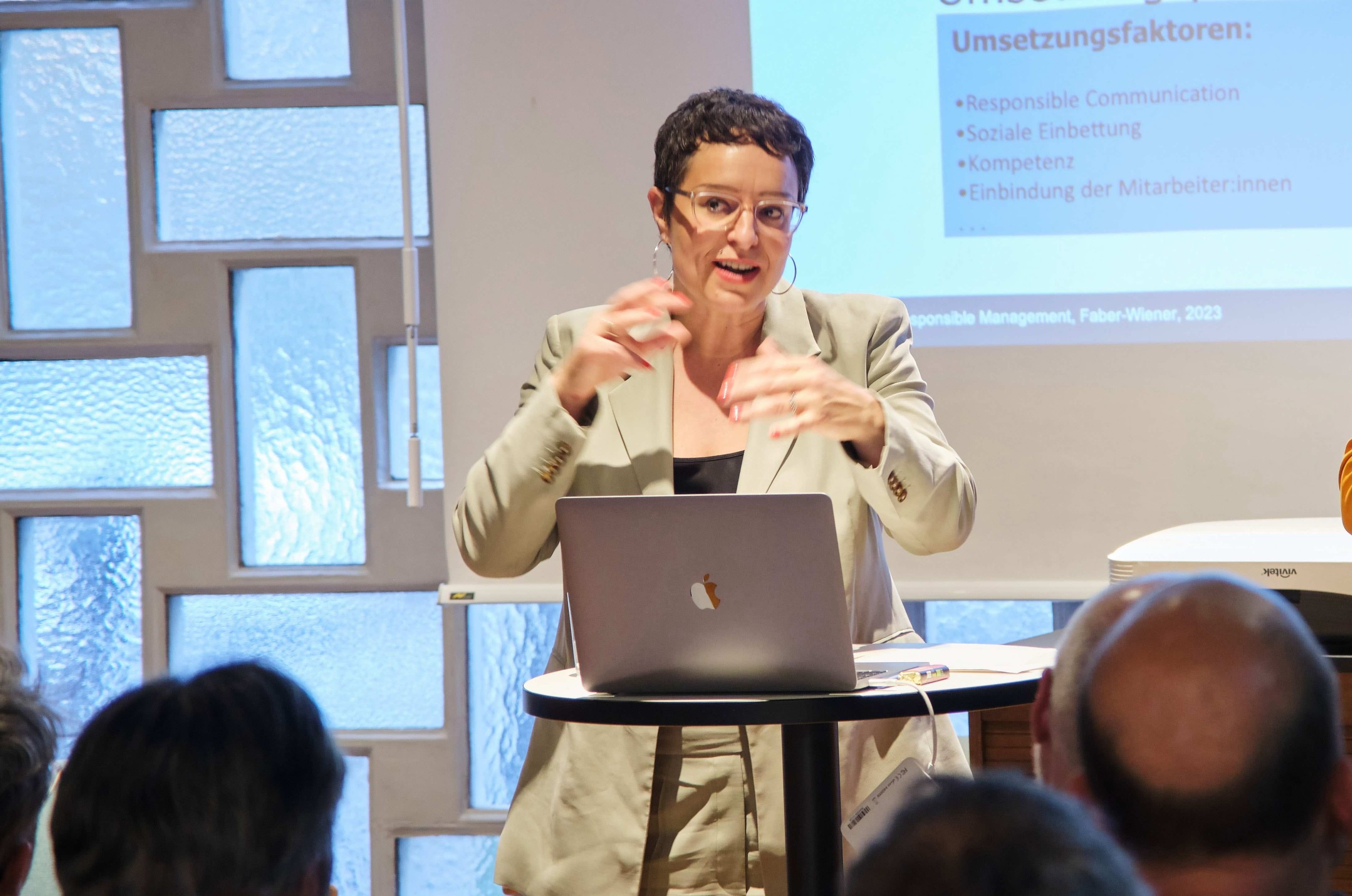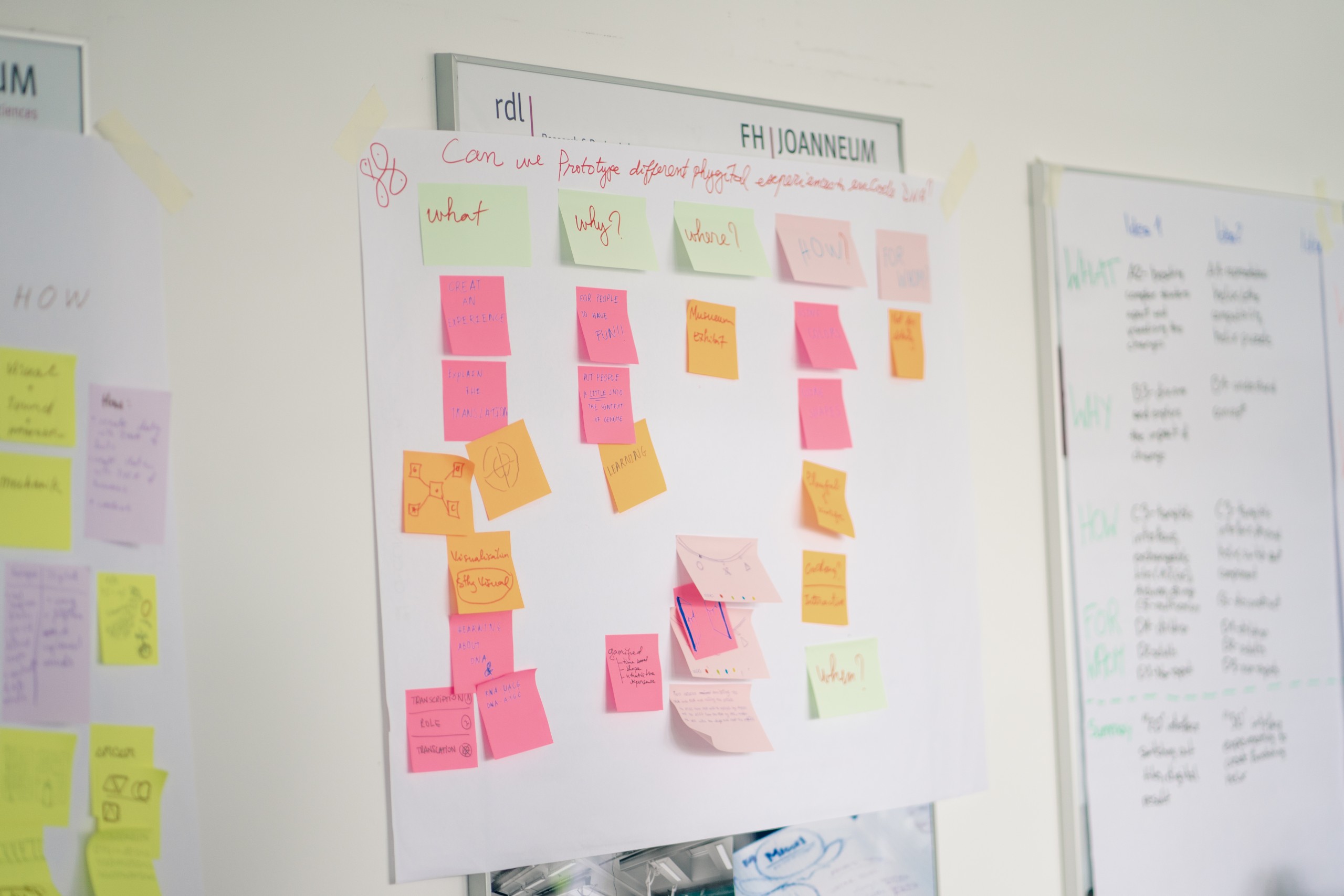Bettina Gjecaj works and teaches at the Institute of Design & Communication. She is an expert in green & social marketing, campaigning, public relations, corporate social responsibility and strategic communication management. In this Science Story, she deals with the question of whether green marketing can exist at all. What exactly does it mean and why should we do it?
Science Story: About designing and destroying
Dipl.-Ing. (FH) Bettina Gjecaj MA, 22. March 2024
www.bernhardschramm.com
Earth Overshoot Day marks the day on which humanity has used up all the natural resources that the earth can regenerate within a year. This year, this day falls on April 4 in Austria, which puts us in 11th place worldwide in terms of our consumption of resources. If everyone lived the way we Austrians do, it would take 3.7 Earths to regenerate resources.
It is obvious that we cannot continue on this course. Measures to stop this development are urgently needed and we as teachers and designers must take on the role of mediators and translators of content in the service of the common good.
Green marketing – in the spirit of sustainability
At the Institute of Design and Communication, we train communication designers who often take on marketing tasks in their later professional environment. There are many points of criticism of marketing in the business world that need to be addressed in a university environment. Starting with the danger of greenwashing, misleading sales practices and planned lifespans through to sexism, this list can be continued almost endlessly.
As trained communication designers, we can counteract such abusive practices by using marketing tools to promote ecological issues and social content. The goal should be for students to approach all marketing tasks with a sensitized approach to sustainability and to carry this practice into the working world after graduation.
The guiding question is: What does social responsibility mean in the context of marketing? New quality criteria are needed: action must be fair, green and sustainable in all areas! When we talk about green marketing, this means that marketing activities must illuminate and permeate the entire life cycle of products, services and brands.

Best practice
As a good example, the outdoor clothing brand Patagonia describes the pro-sustainability attitude described above in one of its slogans: “Build the best product. Cause no unnecessary harm. Use business to inspire and implement solutions to the environmental crisis.”
Designers can support and prepare these messages in terms of content and visuals. Compared to traditional marketing, sustainable marketing aims to achieve completely different goals: It is about a long-term orientation in an ecological & social sense, with a clear focus on gaining customer loyalty. It is about an honest and credible dialog internally and externally, about cooperative, and responsible value creation.
Marketing in the age of digitalization is all about community building and networking. Among other things, this means that customers must be involved in decision-making processes and communication measures.
The 4P’s of marketing
Here are a few measures and practices that designers and marketers can take to counteract the complex problems of today:
🌱Product policy
Sustainable marketing can already become tangible in the course of product development by producing the product locally, sharing it with others, consciously focusing on user-oriented design, making it durable, taking responsibility for suppliers, using ecological materials and thinking about the circular economy in product development and production.
💸Pricing policy
A sustainable pricing policy means thinking about how the price is set, offering guarantees, making the product rentable and ensuring that the costs of environmentally harmful behavior, which are normally borne by the general public, are attributed to the polluter.
✈️ Placement
In terms of sustainability, distribution policy is about taking care of social issues such as employee satisfaction, checking the individual parts of the value chain for sustainability, choosing short transport routes, climate-friendly delivery and transport, packaging-free, seasonal and ideally operating according to the “made-to-order” principle.
💻 Promotion
Communication policy plays a special role in the everyday life of communication designers. In addition to the choice of ecological printing materials, printing techniques and colors, it is above all about designing the right content. This means giving the community security with regard to the product/service, for example through the use of quality seals, the communication of clear values and transparency.
Do the things we create justify what we destroy?
The times we live in require urgently needed transformations in all areas of life. This applies to each and every one of us. At the same time, there is an urgent need to change the way we do business and implement sustainability into the marketing mix.
Until recently, people were the focus of design (human-centered design), but we have long since arrived at the next stage – namely planet-centric design, which promotes the equal treatment of human and non-human stakeholders and emphasizes dynamic interrelationships in (eco-)systems. Design theorist Tony Fry has formulated a question that designers should always ask themselves: “Do the things we create justify what we destroy?” Sustainable design decisions should always address this important question in order to find answers to the challenges of our time.










